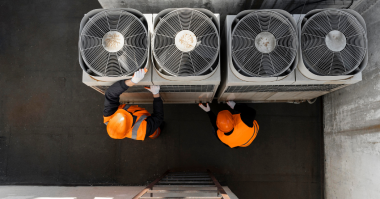Every piece of equipment has a limited useful life, which can be extended by maintaining it properly.
If you wait until the system is entirely broken, you will have to bear a high cost of machine repair and maintenance. You might even have to replace it.
Equipment maintenance is necessary and there are a number of proactive maintenance programs you can follow (preventive maintenance, CBM, TPM, predictive maintenance…) to keep every piece of equipment in optimal working order.
That being said, you can’t just wake up one day and say: ok people we are running predictive maintenance from this day forward. There are some things that need to fall in place first.
1. Get buy-in from relevant parties
Implementing proactive maintenance strategies inevitably requires some level of investment. Because of that, maintenance managers need to bring relevant parties like top management on board to provide the necessary funding.
In addition to top management, maintenance technicians also have to be on board with this change. They need to commit to adopting the proactive mindset and workflow changes and should be open to learning and using new tools. The best way to do that is to involve them in the process from the beginnings and showing them how this change will actually make their daily work easier.
2. Implementing CMMS software
Manually keeping track of all repairs, maintenance, and schedules is inefficient and outdated. Computerized Maintenance Management System (CMMS) allows you to centralize and streamline all maintenance operations. Managing checklists, schedules, work orders, spare parts inventory, and all other maintenance related work becomes much easier, and more importantly, way more accurate.
If you plan to run an advanced strategy like condition-based monitoring (CBM) or predictive maintenance (PdM), there are modern CMMS solutions on the market with integrated features of remote monitoring (sensors feed data directly into the CMMS which can then trigger actions based on predefined parameters). Managers can see data graphs and monitor the health of every asset and are alarmed when their attention is required.
In other words, efficiently managing a larger number of assets in a proactive manner is almost impossible without some type of software support.
3. Prepare enough resources
If you are going to carry out proactive maintenance, you need to make sure you have enough tools and people available to carry out regular routine maintenance tasks. Otherwise, you will run into delays where technicians don’t have enough time to execute all tasks or have to wait for tools to become available to perform tasks that were assigned to them.
If you plan to run CBM or PdM you also need to buy and install condition monitoring sensors and equipment and connect it to your software. For PdM, it is likely that you will also have to hire a data analyst to help you interpret the incoming data and fine-tune predictive algorithms that are there to help you predict the exact times of incoming failures.
4. Provide necessary training
The complete transition from reactive to proactive maintenance is going to require some level of training. Everyone will need to learn the new workflow, from machine operators and maintenance technicians to maintenance managers themselves. If you’re switching to preventive maintenance,technicians and supervisors will only need to learn how to use CMMS software (if you’re implementing one).
For CBM and PdM, technicians will also need to learn how to use new condition-monitoring equipment and interpret shown data. If you plan to implement new inspection techniques, some technicians might need help with that.
Lastly, with all of these changes, you might also want to reiterate different safety guidelines to avoid possible safety incidents.
5. Commit to continuous improvement
Data gathering and analysis is crucial to implement a proactive maintenance program. The unique selling point of these strategies is its ability to make data-driven decisions. Have a to-do task in mind to regularly analyze maintenance history, the performance of you maintenance team, and your operational maintenance costs.
By doing that, you will be able to optimize your newly implemented maintenance program and ensure you are not spending too many resources on proactive maintenance and get a good ROI.
Bryan Christiansen is the founder and CEO of Limble CMMS. Limble is a modern, easy to use mobile CMMS software that takes the stress and chaos out of maintenance by helping managers organize, automate, and streamline their maintenance operations.





Comments